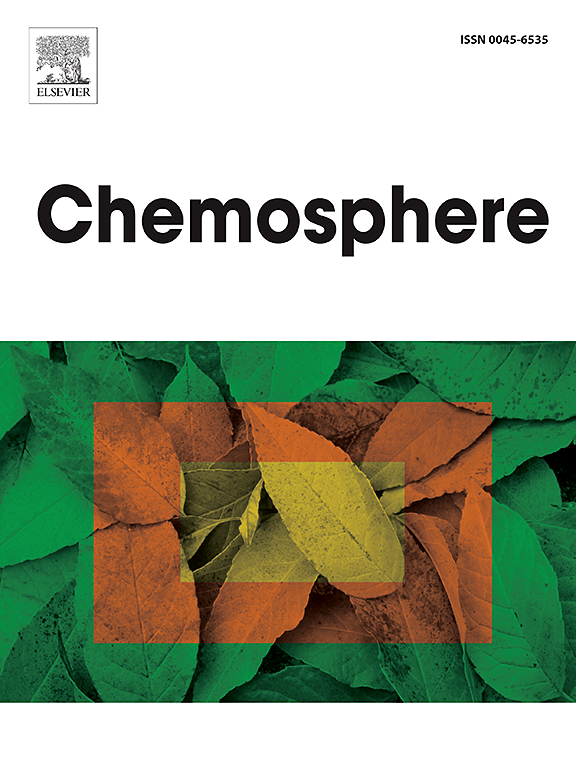生物废弃物衍生碳纳米材料和金属氧化物复合材料的可持续合成及其多功能应用综述
IF 8.1
2区 环境科学与生态学
Q1 ENVIRONMENTAL SCIENCES
引用次数: 0
摘要
将生物废弃物转化为碳纳米材料及其金属氧化物复合材料已经成为在推进纳米技术的同时解决环境挑战的一种可持续战略。这篇综合综述严格审查了生物废物衍生cnm的绿色合成、性能和应用方面的最新进展,包括碳纳米管、石墨烯、碳量子点及其金属氧化物杂化物。我们重点介绍了生态友好的合成技术,如水热碳化,化学气相沉积和微波辅助方法,这些技术可以大规模生产具有定制性能的高性能纳米材料。这些材料具有优异的特性,包括高表面积,可调孔隙率,优越的导电性和生物相容性,使其成为储能,环境修复,催化和生物医学应用的理想选择。金属氧化物(如ZnO, TiO2, Fe3O4)与CNMs的集成通过协同效应增强了它们的功能性能,提高了光催化活性,电化学稳定性和传感能力。我们讨论了它们在超级电容器,生物传感器,抗菌剂和污染物降解中的作用,强调了机理见解和结构-性能关系。尽管取得了重大进展,但诸如可扩展合成、长期稳定性和毒性评估等挑战仍未解决。未来的研究应集中在优化合成方案,探索新的复合材料设计,评估环境影响,以促进商业化。这篇综述为生物废物衍生的纳米材料在推动可持续技术创新方面的潜力提供了一个前瞻性的视角,与全球循环经济目标保持一致。本文章由计算机程序翻译,如有差异,请以英文原文为准。

Sustainable synthesis and multifunctional applications of biowaste-derived carbon nanomaterials and metal oxide composites: A review
The conversion of biowaste into carbon nanomaterials (CNMs) and their metal oxide composites has emerged as a sustainable strategy to address environmental challenges while advancing nanotechnology. This comprehensive review critically examines recent advancements in the green synthesis, properties, and applications of biowaste-derived CNMs, including carbon nanotubes, graphene, and carbon quantum dots, alongside their metal oxide hybrids. We highlight eco-friendly synthesis techniques such as hydrothermal carbonization, chemical vapour deposition, and microwave-assisted methods, which enable the scalable production of high-performance nanomaterials with tailored properties. These materials exhibit exceptional characteristics, including high surface area, tunable porosity, superior electrical conductivity, and biocompatibility, making them ideal for energy storage, environmental remediation, catalysis, and biomedical applications. The integration of metal oxides (e.g., ZnO, TiO2, Fe3O4) with CNMs enhances their functional performance through synergistic effects, improving photocatalytic activity, electrochemical stability, and sensing capabilities. We discuss their role in supercapacitors, biosensors, antimicrobial agents, and pollutant degradation, emphasizing mechanistic insights and structure-property relationships. Despite significant progress, challenges such as scalable synthesis, long-term stability, and toxicity assessment remain unresolved. Future research should focus on optimizing synthesis protocols, exploring novel composite designs, and assessing environmental impacts to facilitate commercialization. This review provides a forward-looking perspective on the potential of biowaste-derived nanomaterials to drive sustainable technological innovations, aligning with global circular economy goals.
求助全文
通过发布文献求助,成功后即可免费获取论文全文。
去求助
来源期刊

Chemosphere
环境科学-环境科学
CiteScore
15.80
自引率
8.00%
发文量
4975
审稿时长
3.4 months
期刊介绍:
Chemosphere, being an international multidisciplinary journal, is dedicated to publishing original communications and review articles on chemicals in the environment. The scope covers a wide range of topics, including the identification, quantification, behavior, fate, toxicology, treatment, and remediation of chemicals in the bio-, hydro-, litho-, and atmosphere, ensuring the broad dissemination of research in this field.
 求助内容:
求助内容: 应助结果提醒方式:
应助结果提醒方式:


